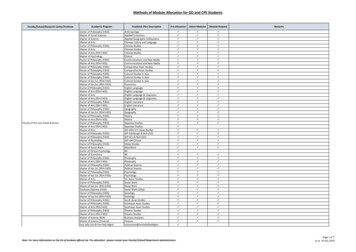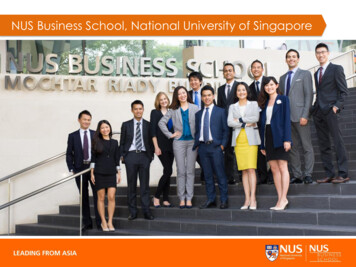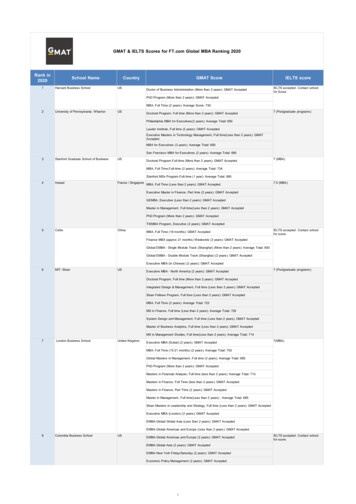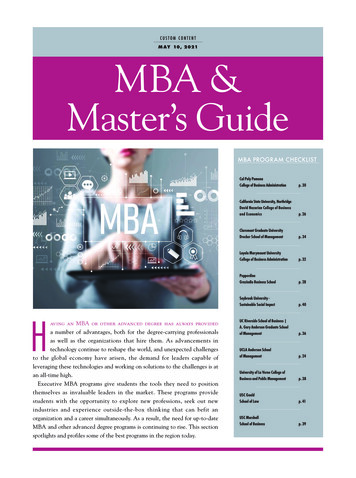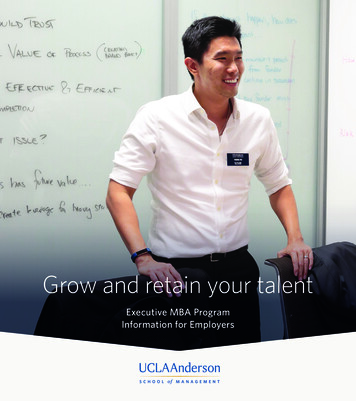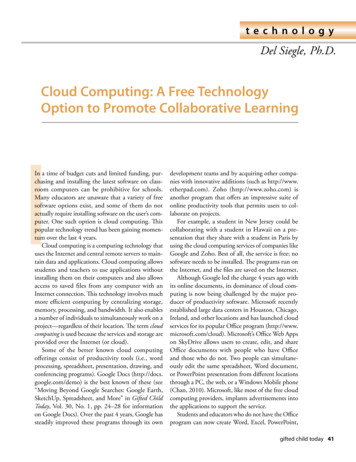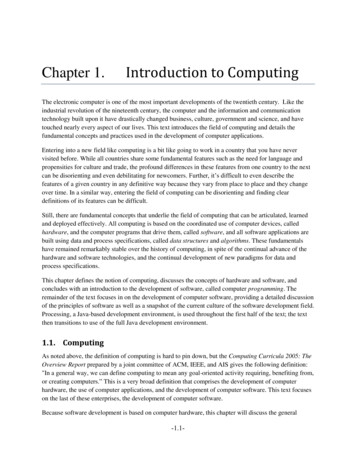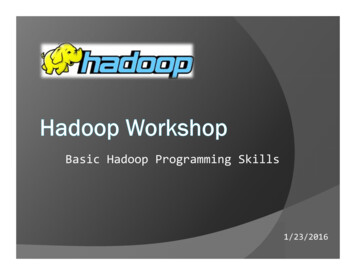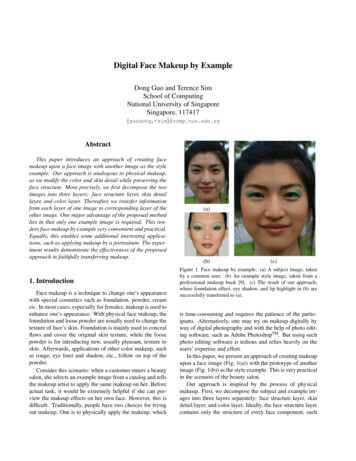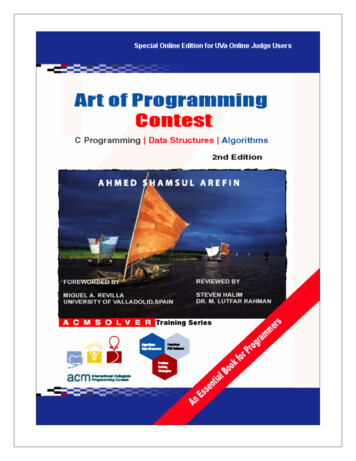
Transcription
ART OF PROGRAMMING CONTESTC Programming Tutorials Data Structures AlgorithmsCompiled byAhmed Shamsul ArefinGraduate Student,Institute of Information and Comunicaion TechnologyBangladesh University of Engineering and Technology (BUET)BSc. in Computer Science and Engineering, CUETReviewed BySteven HalimSchool of Computing, National University of SingaporeSingapore.Dr. M. Lutfar RahmanProfessor, Departent of Computer Science and EngineeringUniversity of Dhaka.Foreworded ByProfessor Miguel A. RevillaACM-ICPC International Steering Committee Member and Problem ArchivistUniversity of shttp://online-judge.uva.esGyankosh Prokashoni, BangladeshISBN 984-32-3382-4
DEDICATED TOShahriar ManzoorJudge ACM/ICPC World Finals 2003-2006(Whose mails, posts and problems are invaluable to all programmers)AndMy loving parents and colleagues
ACKNOWLEDGEMENTSI would like to thank following people for supporting me and helping me for the significantimprovement of my humble works. Infact, this list is still incomplete.Professor Miguel A. RevillaDr. M KaykobadDr. M. Zafar IqbalDr. M. Lutfar RahmanDr. Abu TaherHoward ChengSteven HalimShahriar ManzoorCarlos Marcelino Casas CuadradoMahbub Murshed SumanSalahuddin Mohammad MasumSamiran MahmudM H RaselSadiq M. AlamMehedi BakhtAhsan Raja ChowdhuryMohammad Rubaiyat Ferdous JewelKM HasanMonirul Islam SharifGahangir HossainS.M Saif ShamsShah Md. Shamsul AlamUniversity of Valladolid, Spain.North South University, BangladeshShahjalal University of Science andTechnology, BangladeshUniversity of Dhaka, BangladeshDaffodil International UniversityUniversity of Lethbridge, CanadaNational University of Singapore,SingaporeSouth East University, BangladeshUniversity of Valladolid, SpainArizona State University, USADaffodil International UniversityDhaka University of Engineering andTechnologyChittagong University of Engineering andTechnologyNational University of Singapore,SingaporeBangladesh University of Engineering andTechnologyUniversity of DhakaUniversity of Toronto, CanadaNorth South UniversityGeorgia Institute of Technology,USAChittagong University of Engineering andTechnologyShahjalal University of Science andTechnologyDaffodil International UniversityAuthor’s Biography: Ahmed Shamsul Arefin is completing his Masters fromBangladesh University of Engineering & Technology (BUET) and has completedBSc. in Coputer Science and Eningeering from CUET. In Computer Science andEngineering . He participated in the 2001 ACM Regional Contest in Dhaka, and histeam was ranked 10th. He became contest organizer at Valladolid online judge byarranging “Rockford Programming Contest 2001” and local Contest at severaluniversities. His Programming Contest Training Website “ACMSolver.org” hasbeen linked with ACM UVa , USU and Polish Online Judge – Sphere.His research interests are Contests, Algorithms, Graph Theory and Web-based applications. HisContact E-mail : asarefin@yahoo.com Web: in/
Preface to 2nd EditionI am happy to be able to introduce the 2nd Edition of this book to the readers. The objectiveof this edition is not only to assist the contestants during the contest hours but also describingthe core subjects of Computer Science such as C Programming, Data Structures andAlgorithms. This edition is an improvement to the previous edition. Few more programmingtechniques like STL (Standard Template Library), manipulating strings and handlingmathematical functions are introduced here.It is hoped that the new edition will be welcomed by all those for whom it is meant and thiswill become an essential book for Computer Science students.Preface to 1st EditionWhy do programmers love Programming Contest? Because young computer programmerslike to battle for fame, money, and they love algorithms. The first ACM-ICPC (InternationalCollegiate Programming Contest) Asia Regional Contest Bangladesh was held at North SouthUniversity in the year 1997. Except the year 2000, our country hosted this contest each yearand our invaluable programmers have participated the world final every year from 1997.Our performance in ACM/ICPC is boosting up day by day. The attention and time we arespending on solving moderate and difficult problems is noticeable. BUET, University ofDhaka, NSU and AIUB has produced many programmers who fought for World Finals.Institutions looking for boosting the performance of their teams in the programming contestsmay consider them as prospective coaches/trainers. Some universities have recently adoptedanother strategy. They are offering 1-credit courses for students interested in improving theirproblem-solving and programming skills.I am very much grateful to our mentors, Dr. M Kaykobad who was honored with the “BestCoach” award in the World Finals in Honolulu. Under his dynamic presence our countryteams became champion several times in the ACM/ICPC Asia Regional. Dr. M. Zafar Iqbal,Chief Judge of our ACM/ICPC Regional Contests. Dr. Abul L Haque, who first contactedDr. C.J. Hwang (Asia Contests Director and Professor at Texas State University, SanMarcos, USA) and wanted to have a n ACM/ICPC regional site at Dhaka back in 1997. Alsoa big thank should go to Mr. Shahriar Manzoor, our renown Problem Setter, JudgingDirector for ACM/ICPC Regional (Dhaka Site) and World Final Judge and Problem Setter. Iwould like to thank him personally because, he showed me the right way several times when Iwas setting problems for Valladolid Online Judge in “Rockford Programming Contest 2001”and while developing my Programming Contest Training Site “ACMSolver.org”.
Thanks to Professor Miguel A. Revilla, University of Valladolid, Spain for linking myACMSolver (http://www.acmsolver.org) site with his world famous Valladolid Online Judge(http://acm.uva.es/p) and making me ACM Valladolid Online Judge Algorithmic TeamMember for helping them to add some problems at live archive.And also invaluable thanks to Steven Halim, a PhD Student of NUS, Singapore for thepermission of using his website (http://www.comp.nus.edu.sg/ stevenha/) contents. A majorpart of this book is compiled from his renowned website. Of course, it is mentionable that hiswebsite is based upon USACO Training page located at (http://ace.delos.com/)I am grateful to Daffodil International University, especially to honorable Vice-ChancellorProfessor Aminul Islam and Dean, Faculty of Science and Informaion Technology Dr. M.Lutfar Rahman and all my colleagues at Department of Computer Science andEngineering here, for providing me the golden opportunity of doing something on ACMProgramming Contest and other researches.Furthermore, since this project is a collection of tutorials from several sources so all theauthors of tutorials are acknowledged in the Reference section of this book. Tracking downthe original authors of some of these tutorials is much difficult. I have tried to identify caseby case and in each case asked permission. I apologize in advance if there are any oversights.If so, please let me know so that I can mention the name in future edition.Finally I would like to add a line at the end of this preface, for last few years while makingand maintaining my site on ACM Programming Contest, I have got few experiences. I feltthat there should be some guideline for beginners to enter into the world of programming. So,I started collecting tutorials and compiling them to my site. Furthermore, this is anotherattempt to make Programming Contest in our country, as I have tried to put all my collectionsin a printed form. Your suggestions will be cordially accepted.Best regards,Ahmed Shamsul Arefin.
Foreword NoteAs the main resposible of the University of Valladolid Online Judge I has the feeling that thisbook is not only a recollection of tutorials as the author says in the preface, but also will be anessential part of the help sections of the UVa site, as it put together a lot of scatteredinformation of the Online Judge, that may help to many programmers around the world,mainly to the newcomers, what is very important for us. The author proves a special interestin guiding the reader, and his tips must be considered almost as orders, as they are a result ofa great experience as solver of problems as well as a problemsetter. Of course, the book ismuch more that an Online Judge user manual and contains very important informationmissing in our web, as the very interesting clasification of a lot of problems by categories,that analyze in detail and with examples. I think it is a book all our users should be allowed toaccess to, as is a perfect complement to our Online Judge.Miguel A. RevillaACM-ICPC International Steering Committee Member and Problem ArchivistUniversity of Valladolid, ine-judge.uva.es
Review NoteA Computer programming contest is a pleasurable event for the budding programmers, butonly a few books are available as a training manual for programming competitions.This book is designed to serve as a textbook for an algorithm course focusing onprogramming as well as a programming course focusing on algorithms. The book is speciallydesigned to train students to participate in competitions such as the ACM InternationalCollegiate Programming Contest.The book covers several important topics related to the development of programming skillssuch as, fundamental concepts of contest, game plan for a contest, essential data structures forcontest, Input/output techniques, brute force method, mathematics, sorting, searching, greedyalgorithms, dynamic programming, graphs, computational geometry, Valladolid Online Judgeproblem category, selected ACM programming problems, common codes/routines forprogramming, Standard Template Library (STL), PC2 contest administration and teamguide.The book also lists some important websites/books for ACM/ICPC Programmers.I believe that the book will be book will be of immense use for young programmers interestedin taking part in programming competitions.Dr. M. Lutfar RahmanProfessor, Department of Computer Science and Engineering (CSE)University of Dhaka.Bangladesh.
Notes from Steven HalimWhen I created my own website World of Seven few years back(http://www.comp.nus.edu.sg/ stevenha), my aim was to promote understanding of datastructures and algorithms especially in the context of programming contest and to motivatemore programmers to be more competitive by giving a lot of hints for many University ofValladolid (UVa) Online Judge problems. However, due to my busyness, I never managed toset aside a time to properly publicize the content of my website in a book format. Thus, I amglad that Ahmed compiled this book and he got my permission to do so. Hopefully, this bookwill be beneficial for the programmers in general, but especially to the Bangladeshiprogrammers where this book will be sold.Steven HalimNational University of Singapore (NUS)Singapore.
ContentsChapter 1Chapter 2Chapter 3Chapter 4Chapter 5Chapter 6Chapter 7Chapter 8Chapter 9Chapter 10Chapter 11Chapter 12Chapter 13Chapter 14Appendix AAppendix BAppendix CAppendix DAppendix EFundamental ConceptsGame Plan For a ContestProgramming In C: a TutorialEssential Data Structures for ContestInput/Output TechniquesBrute Force MethodMathematicsSortingSearchingGreedy AlgorithmsDynamic ProgrammingGraphsComputational GeometryValladolid OJ Problem CategoryACM Programming ProblemsCommon Codes/Routines For ProgrammingStandard Template Library (STL)PC2 Contest Administration And Team GuideImportant Websites/Books for 76188230235242
What is the ACM Programming Contest?The Association for Computing Machinery (ACM) sponsors a yearly programming contest,recently with the sponsorship of IBM. The contest is both well-known and highly regarded:last year 2400 teams competed from more than 100 nations competed at the regional levels.Sixty of these went on to the international finals. This contest is known as ACMInternational Collegiate Programming Contest (ICPC).The regional contest itself is typically held in November, with the finals in March. Teams ofthree students use C, C , or Java to solve six to eight problems within five hours. Onemachine is provided to each team, leaving one or two team members free to work out anapproach. Often, deciding which problems to attack first is the most important skill in thecontest. The problems test the identification of underlying algorithms as much asprogramming savvy and speed.
CHAPTER 1FUNDAMENTAL CONCEPTS14CHAPTER 1 FUNDAMENTAL CONCEPTSProgramming Contest is a delightful playground for the exploration of intelligence ofprogrammers. To start solving problems in contests, first of all, you have to fix your aim.Some contestants want to increase the number of problems solved by them and the othercontestants want to solve less problems but with more efficiency. Choose any of the twocategories and then start. A contestant without any aim can never prosper in 24 hoursonline judge contests. So, think about your aim.[1]If you are a beginner, first try to find the easier problems.Try to solve them within shorttime. At first, you may need more and more time to solve even simple problems. But donot be pessimistic. It is for your lack of practice. Try to solve easier problems as theyincrease your programming ability. Many beginners spend a lot of time for coding theprogram in a particular language but to be a great programmer you should not spendmore times for coding, rather you should spend more time for debugging and thinkingabout the algorithm for the particular problem. A good programmer spends 10% time forcoding and 45% time for thinking and the rest of the time for debugging. So to decreasethe time for coding you should practice to solve easier problems first.Do not try to use input file for input and even any output file for output when sending theprogram to online judges. All input and output parts should be done using standard inputand outputs. If you are a C or C programmer try this, while coding and debugging forerrors add the lines at the first line of the main procedure i.e.#include stdio.h main (){freopen(“FILE NAME FOR INPUT”,”r”,stdin);freopen(“FILE NAME FOR OUTPUT”,”w”,stdout);Rest of the codes return 0;}But while sending to online judges remove the two lines with freopen to avoid restrictedfunction errors. If you use the first freopen above, it will cause your program to takeinput from the file “FILE NAME FOR INPUT”. Write down the inputs in the file toavoid entering input several times for debugging. It saves a lot of time. But as thefunction opens input file which can be a cause of hacking the websites of online judgesthey don’t allow using the function and if you use it they will give compilation error(Restricted Function). The second freopen is for generating the output of your program ina specified file named “FILE NAME FOR OUTPUT” on the machine. It is veryhelpful when the output can’t be justified just viewing the output window (Especially forString Manipulation Problem where even a single space character can be a cause of
CHAPTER 1FUNDAMENTAL CONCEPTS15Wrong answer). To learn about the function more check Microsoft Developer Network(MSDN Collection) and C programming helps.Programming languages and dirty debuggingMost of the time a beginner faces this problem of deciding which programming languageto be used to solve the problems. So, sometimes he uses such a programming languagewhich he doesn’t know deeply. That is why; he debugs for finding the faults for hourafter hour and at last can understand that his problem is not in the algorithm, rather it isin the code written in that particular language. To avoid this, try to learn only oneprogramming language very deeply and then to explore other flexible programminglanguages. The most commonly used languages are C, C , PASCAL and JAVA. Java isthe least used programming language among the other languages. Avoid dirty debugging.Avoid Compilation ErrorsThe most common reply to the beginner from 24 hours online judge is COMPILATIONERROR (CE). The advices are,1) When you use a function check the help and see whether it is available in StandardForm of the language. For example, do not use strrev function of string.h header file of Cand C as it is not ANSI C, C standard. You should make the function manually ifyou need it. Code manually or avoid those functions that are available in your particularcompiler but not in Standard Form of the languages.2) Don’t use input and output file for your program. Take all the inputs for standard inputand write all the outputs on standard output (normally on the console window). Checkmy previous topics.3) Do not use conio.h header file in C or C as it is not available in Standard C andC . Usually don’t use any functions available in conio.h header file. It is the greatcause of Compilation Error for the programmers that use Turbo C type compiler.4) built-in functions and packages are not allowed for using in online judge.5) Don’t mail your program i.e. don’t use yahoo, hotmail etc. for sending your programto judge as it is a complex method—write judge id, problems number etc. Rather usesubmit-system of the online judge for example, Submit page of Valladolid. Using theformer will give you CE most of the time as they include there advertisements at thebeginning and end of your program. So the judge can’t recognize the extra charactersconcatenated in your sent code and gives you CE. About 90% CE we ever got is for this
CHAPTER 1FUNDAMENTAL CONCEPTS16reason. The mail system also breaks your programs into several lines causing WrongAnswer or Other Errors though your program was correct indeed.There are many famous online judges that can judge your solution codes 24 hours. Someof them are: Valladolid OJ (http://acm.uva.es/p)Ural OJ (http://acm.timus.ru)Saratov OJ (http://acm.sgu.ru)ZJU OJ (http://acm.zju.edu.cn)Official ACM Live Archive (http://cii-judge.baylor.edu/)Peking University Online Judge (http://acm.pku.edu.cn/JudgeOnline/)Programming Challenges (http://www.programming-challenges.com)Forget Efficiency and start solving easier problemsSometimes, you may notice that many programmers solved many problems but theymade very few submissions (they are geniuses!). At first, you may think that I should tryto solve the problems as less try as possible. So, after solving a problem, you will notwant to try it again with other algorithm (may be far far better than the previousalgorithm you used to solve that problem) to update your rank in the rank lists. But myopinion is that if you think so you are in a wrong track. You should try other ways as inthat and only that way you can know that which of the algorithms is better. Again in thatway you will be able to know about various errors than can occur. If you don’t submit,you can’t know it. Perhaps a problem that you solved may be solved with less time inother way. So, my opinion is to try all the ways you know. In a word, if you are abeginner forget about efficiency.Find the easier problems.Those problems are called ADHOC problems. You can find thelist of those problems available in 24 OJ in S. Halim’s, acmbeginner’s, acmsolver’swebsites. Try to solve these problems and in that way you can increase yourprogramming capability.Learn algorithmsMost of the problems of Online Judges are dependent on various algorithms. Analgorithm is a definite way to solve a particular problem. If you are now skilled in codingand solving easier problems, read the books of algorithms next. Of course, you shouldhave a very good mathematical skill to understand various algorithms. Otherwise, thereis no other way but just to skip the topics of the books. If you have skill in math, read thealgorithms one by one, try to understand. Aft er understanding the algorithms, try towrite it in the programming language you have learnt (This is because, most of the
CHAPTER 1FUNDAMENTAL CONCEPTS17algorithms are described in Pseudocode). If you can write it without any errors, try tofind the problems related to the algorithm, try to solve them. There are many famousbooks of algorithms. Try to make modified algorithm from the given algorithms in thebook to solve the problems.Use simple algorithms, that are guaranteed to solve the problem in question, even if theyare not the optimum or the most elegant solution. Use them even if they are the moststupid solution, provided they work and they are not exponential. You are not competingfor algorithm elegance or efficiency. You just need a correct algorithm, and you need itnow. The simplest the algorithm, the more the chances are that you will code it correctlywith your first shot at it.This is the most important tip to follow in a programming contest. You don’t have thetime to design complex algorithms once you have an algorithm that will do your job.Judging on the size of your input you can implement the stupidest of algorithms and havea working solution in no time. Don’t underestimate today’s CPUs. A for loop of 10million repetitions will execute in no time. And even if it takes 2 or 3 seconds youneedn’t bother. You just want a program that will finish in a couple of seconds. Usuallythe timeout for solutions is set to 30 seconds or more. Experience shows that if youralgorithm takes more than 10 seconds to finish then it is probably exponential and youshould do something better.Obviously this tip should not be followed when writing critical code that needs to be asoptimized as possible. However in my few years of experience we have only come tomeet such critical code in device drivers. We are talking about routines that will executethousands of time per second. In such a case every instruction counts. Otherwise it is notworth the while spending 5 hours for a 50% improvement on a routine that takes 10milliseconds to complete and is called whenever the user presses a button. Nobody willever notice the difference. Only you will know.Simple Coding1. Avoid the usage of the or -- operators inside expressions or function calls. Alwaysuse them in a separate instruction. If you do this there is no chance that you introduce anerror due to post-increment or pre-increment. Remember it makes no difference to theoutput code produced.2. Avoid expressions of the form *p .3. Avoid pointer arithmetic. Instead of (p 5) use p[5].4. Never code like :
CHAPTER 118FUNDAMENTAL CONCEPTSreturn (x*y) Func(t)/(1-s);but like :temp func(t);RetVal (x*y) temp/(1-s);return RetVal;This way you can check with your debugger what was the return value of Func(t) andwhat will be the return code of your function.5. Avoid using the operator. Instead of :return (((x*8-111)%7) 5) ? y : 8-x;Rather use :Temp ((x*8-111)%7);if (5 Temp) return y; elsereturn 8-x;If you follow those rules then you eliminate all chances for trivial errors, and if you needto debug the code it will be much easier to do so.· NAMING 1 : Don’t use small and similar names for your variables. If you have threepointer variables don’t name them p1, p2 and p3. Use descriptive names. Remember thatyour task is to write code that when you read it it says what it does. Using names likeIndex, RightMost, and Retries is much better than i, rm and rt. The time you waste by theextra typing is nothing compared to the gain of having a code that speaks for itself.· NAMING 2 : Use hungarian naming, but to a certain extent. Even if you oppose it(which, whether you like it or not, is a sign of immaturity) it is of immense help.· NAMING 3 : Don’t use names like {i,j,k} for loop control variables. Use {I,K,M}. Itis very easy to mistake a j for an i when you read code or “copy, paste & change” code,but there is no chance that you mistake I for K or M.Last wordsPractice makes a man perfect. So, try to solve more and more problems. A genius can’tbe built in a day. It is you who may be one of the first ten of the rank lists after someday.So, get a pc, install a programming language and start solving problem at once.[1]
CHAPTER 2GAME PLAN FOR A CONTEST19CHAPTER 2 GAME PLAN FOR A CONTESTDuring a real time contest, teams consisting of three students and one computer are tosolve as many of the given problems as possible within 5 hours. The team with the mostproblems solved wins, where solved'' means producing the right outputs for a set of(secret) test inputs. Though the individual skills of the team members are important, in[2]order to be a top team it is necessary to make use of synergy within the team.However, to make full use of a strategy, it is also important that your individual skills areas honed as possible. You do not have to be a genius as practicing can take you quite far.In our philosophy, there are three factors crucial for being a good programming team: Knowledge of standard algorithms and the ability to find an appropriate algorithmfor every problem in the set; Ability to code an algorithm into a working program; and Having a strategy of cooperation with your teammates.What is an Algorithm?"A good algorithm is like a sharp knife - it does exactly what it is supposed to do with a minimum amount ofapplied effort. Using the wrong algorithm to solve a problem is trying to cut a steak with a screwdriver: you mayeventually get a digestible result, but you will expend considerable more effort than necessary, and the result isunlikely to be aesthetically pleasing."Algorithm is a step-by-step sequence of instructions for the computer to follow.To be able to do something competitive in programming contests, you need to know a lotof well-known algorithms and ability to identify which algorithms is suitable for aparticular problem (if the problem is straightforward), or which combinations or variantsof algorithms (if the problem is a bit more complex).A good and correct algorithm according to the judges in programming contests:1. Must terminate[otherwise: Time Limit/Memory Limit/Output Limit Exceeded will be given]2. When it terminate, it must produce a correct output[otherwise: the famous Wrong Answer reply will be given]3. It should be as efficient as possible[otherwise: Time Limit Exceeded will be given]
CHAPTER 2GAME PLAN FOR A CONTEST20Ability to quickly identify problem typesIn all programming contests, there are only three types of problems:1. I haven't see this one before2. I have seen this type before, but haven't or can't solve it3. I have solve this type beforeIn programming contests, you will be dealing with a set of problems, not only oneproblem. The ability to quickly identify problems into the above mentioned contestclassifications (haven't see, have seen, have solved) will be one of key factor to do well inprogramming contests.MathematicsDynmic ProgrammingGraphSortingSearchingSimulationString ProcessingComputational GeometryAdHocPrime NumberBig IntegerPermutationNumber TheoryFactorialFibonacciSequencesModulusLongest Common SubsequenceLongest Increasing SubsequenceEdit Distance0/1 KnapsackCoin ChangeMatrix Chain MultiplicationMax Interval SumTraversalFlood FillFloyed WarshalMSTMax Bipertite MatchingNetwork FlowAritculation PointBubble SortQuick SortMerge Sort (DAndC)Selection SortRadix SortBucket SortComplete Search, Brute ForceBinary Search (DAndC)BSTJosephusString MatchingPattern MatchingConvex HullTrivial Problems
CHAPTER 2GAME PLAN FOR A CONTEST21Sometimes, the algorithm may be 'nested' inside a loop of another algorithm. Such asbinary search inside a DP algorithm, making the problem type identification not so trivial.If you want to be able to compete well in programming contests, you must be able toknow all that we listed above, with some precautions to ad-hoc problems.'Ad Hoc' problems are those whose algorithms do not fall into standard categories withwell-studied solutions. Each Ad Hoc problem is different. No specific or generaltechniques exist to solve them. This makes the problems the 'fun' ones (and sometimesfrustrating), since each one presents a new challenge.The solutions might require a novel data structure or an unusual set of loops orconditionals. Sometimes they require special combinations that are rare or at least rarelyencountered. It usually requires careful problem description reading and usually yield toan attack that revolves around carefully sequencing the instructions given in the problem.Ad Hoc problems can still require reasonable optimizations and at least a degree ofanalysis that enables one to avoid loops nested five deep, for example.Ability to analyze your algorithmYou have identified your problem. You think you know how to solve it. The question thatyou must ask now is simple: Given the maximum input bound (usually given in problemdescription), can my algorithm, with the complexity that I can compute, pass the timelimit given in the programming contest.Usually, there are more than one way to solve a problem. However, some of them may beincorrect and some of them is not fast enough. However, the rule of thumb is:Brainstorm many possible algorithms - then pick the stupidest that works!Things to learn in algorithm1. Proof of algorithm correctness (especially for Greedy algorithms)2. Time/Space complexity analysis for non recursive algorithms.3. For recursive algorithms, the knowledge of computing recurrence relations and analyzethem: iterative method, substitution method, recursion tree method and finally, MasterTheorem4. Analysis of randomized algorithm which involves probabilistic knowledge, e.g: Randomvariable, Expectation, etc.5. Amortized analysis.6. Output-sensitive analysis, to analyze algorithm which depends on output size, example:O(n log k) LIS algorithm, which depends on k, which is output size not input size.
CHAPTER 2GAME PLAN FOR A CONTEST22Table 1: Time comparison of different order of growthWe assume our computer can compute 1000 elements in 1 seconds (1000 ms)Or
algorithms, dynamic programming, graphs, computational geometry, Valladolid Online Judge problem category, selected ACM programming problems, common codes/routines for programming, Standard Template Library (STL), PC2 contest administration and team guide.The book also list
